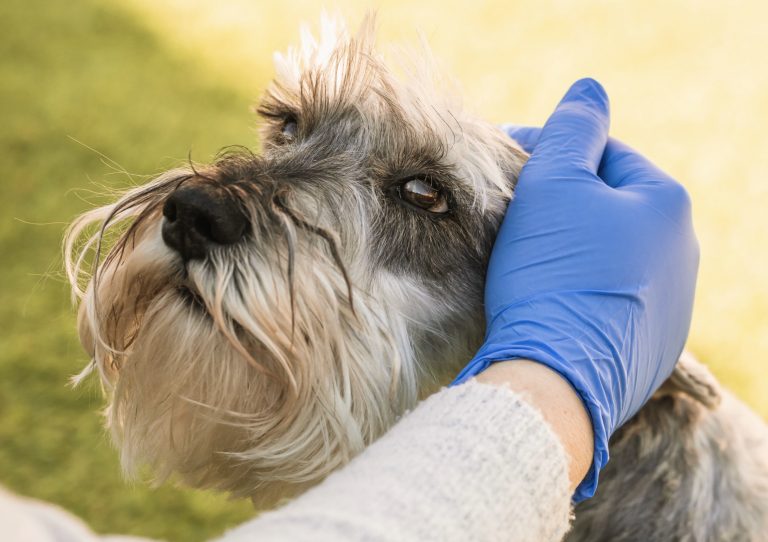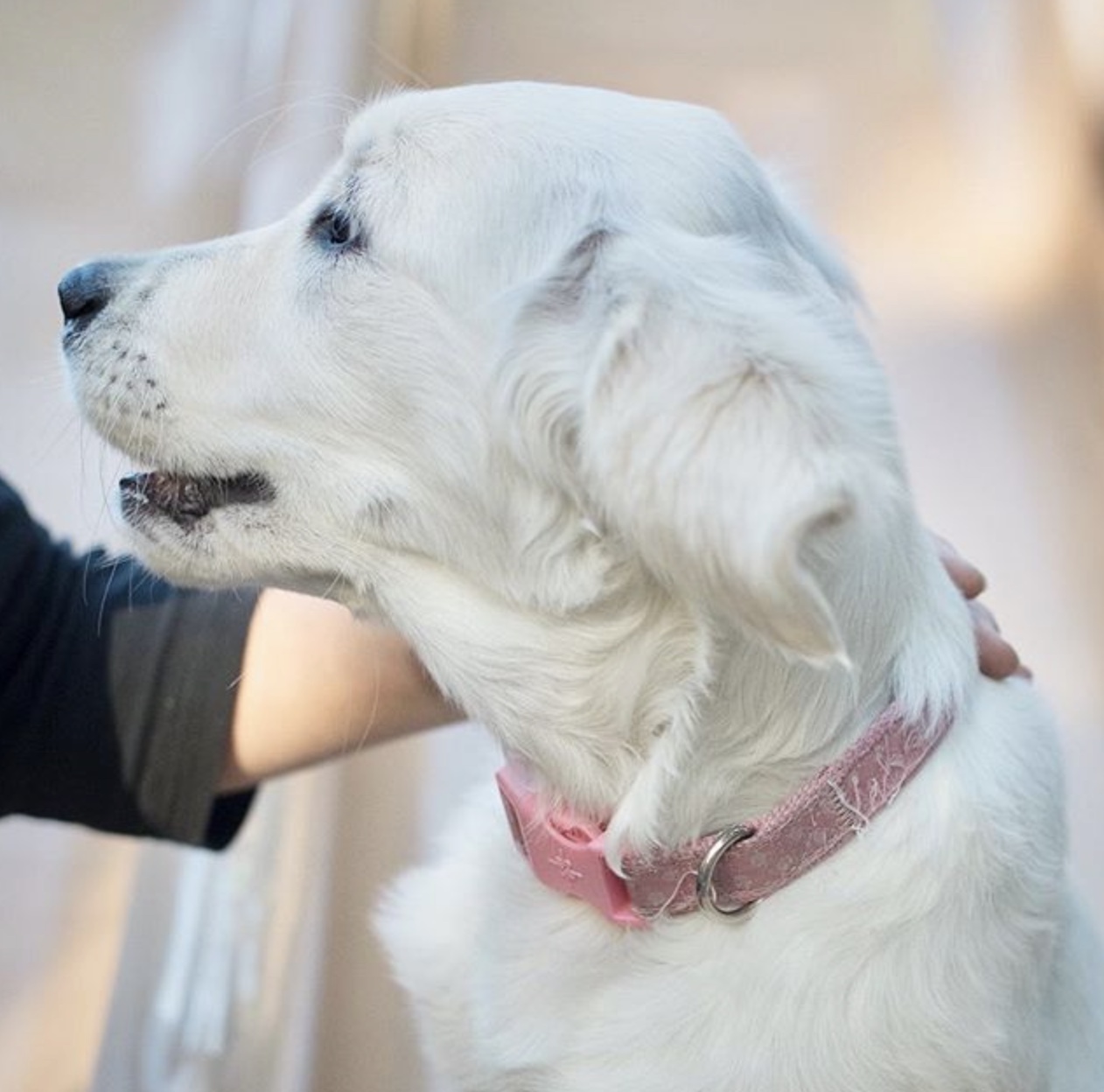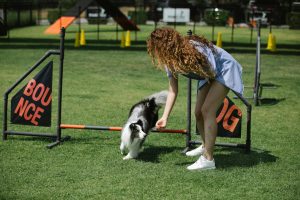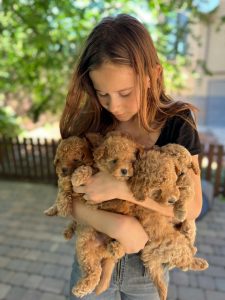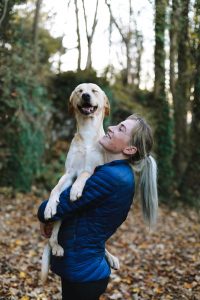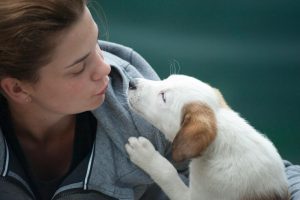In order to train your dog, you have to understand his psychology. How does he learn? How does your dog react to certain situations?
According to dog psychology, domestic dogs learn in different ways. There are three main ways that you can use to teach your dog behavior and even tricks.
If you can understand how our dogs learn, you can make learning and training easier. The first type of learning is seeing consequences to their animal behavior. The second way is by making associations, something is always connected to something else. Dog make these associations. For example, when the doorbell rings, someone comes in. That is one way how associations work.
Or another example, you put the leash on, and your dog knows a walk is coming. The third way dogs learn is through imitation. They imitate people and dogs around them. You can easily notice this behavior when you are among several dogs. One picks up a stick, and another dog picks up a stick instantly.
Now let’s try and explain every way of dog learning and how you can use it for your training. The better you understand basic dog psychology, the easier it will be to handle behavior patterns.
Operant conditioning
This is the term we give to the type of learning through consequences to behavior. There are three parts of this type of learning. ABC if you like, where A stands for antecedent, B stands for behavior, and C stands for consequence.
Here is a typical example. You ask your dog to sit, he sits, and he gets a reward at the end of it. And because he knows reward comes after sit, chances are, your dog will sit the next time you ask him. Why? Because he thinks and knows he will get another food reward.
To use this type of learning for your training, you have to understand what comes before and after the behavior. If your pet dog sees positive consequences, he is more likely to do it again. But if your puppy sees negative consequences, he might not do it again. So, what can you do? Well, the trick is to redirect any negative behavior into a positive behavior without punishing your dog.
Here is an example. Jumping on people is a negative behavior, right? Well, if your dog jumps on you, simply back away. Wait for your dog to sit calmly and then praise him and give him a reward. Repeat it multiple times and your dog will greet you by sitting instead of jumping on you.
If your pet dog starts associate training with punishment, he might stop enjoying your company and will be less motivated to train.
Classical Conditioning
This is the type of learning where dogs associate one thing with another. It is the Pavlov experiment. In 1902, Pavlov started from the idea that there are some things that a dog does not need to learn. They do not need to learn to salivate whenever they see food.
In his experiment, Pavlov measured the salivation rates of dogs. He found out that they produce saliva when they heard or smelt food in anticipation of feeding.
And that is the very essence of classical conditioning and associative learning. Dogs make associations between different scenarios. They develop behavior patterns.
In the modern era, a dog trainer can use a clicker to make the association between ringing and food coming. Why a clicker? Because a clicker can mark the training and position easily. Clickers are very precise.
But classical conditioning is more than just clicking and marking. It is making associations. For example, when your dog sees you picking up the leash, he knows he is going outside to walk. How can you make positive associations? By rewarding your dog the moment he exhibits the behavior. This is one reason why the clicker works perfectly, because it is precise.
But here is another example for your dog to associate touching with something positive. Some dogs do not want to be touched. And even less when kids are involved. What you do is teach your puppy that touching means rewards.
How to do it? Practice positive reinforcement at home. Call your dog and put him in a sit position. Praise and give him a treat. Then, touch his ear and give him a treat. Touch his nose and give him a treat. Play with his ears and give him a treat. Pet him and give him a treat. In time, your dog associates touching with treats.
And if you want to make sure your dog loves humans and kids especially, practice with kids. But give kids higher-value treats. In your dog’s mind, that means, “Oh boy, I love it when kids come and play with me. I get special treats”.
My dog has a couple of associations. For example, when I put off my working glasses, he knows I have finished work and we go out. He instantly comes out of his crate, cuddles for a moment, and goes to the front door and waits for me to go outside.
Or, another example, he knows that when I pick up my sports bag, I go to the gym and he is not coming out with me. He might be anywhere in the house, but he instantly goes to his crate, waits for a treat, and waits for me there until I come back home.
Just remember, dogs do learn from negative associations as well. This is why some dogs hate certain breeds. If your dog gets attacked by let’s say, a German Shepherd, he might hate GSDs for the rest of his life. Of course, you can desensitize that and make positive associations with other German shepherds.
To counter negative associations, always watch your dog when you are outside. Make sure your dog sees things as positively as possible. Be aware of other dogs. Be aware of the environment around your puppy. And most importantly, look out for triggers that might cause an emotion in your dog.
Learning through imitation
As we said before, dogs also learn through imitation. This happens in the litter, where dog mom teaches her puppies to behave properly. It also happens in the doggy park. Or with other dogs around them.
But dogs also learn from their human pet owner. They imitate your physical behavior. Some behaviorist trainers use this to their advantage.
For example, when they teach a dog to spin. They say the cue word, spin, and wait for the dog to spin. Then, they immediately reward the puppy behavior. So, your dog makes an association that if he imitates your behavior, he will get a treat.
Is your dog an independent or dependent learner?
You cannot say which one is better. The best one is the middle ground. For example, independent learners do not need you. They will try to solve a problem on their own. He doesn’t look for guidance and doesn’t need your help.
Dependent learners will look at you first and ask for help before solving the challenge. Finding the middle ground is one of the big challenges for dog owners and dog trainers. You definitely do not want a truly independent learner that might not even come when called and do everything on their own.

